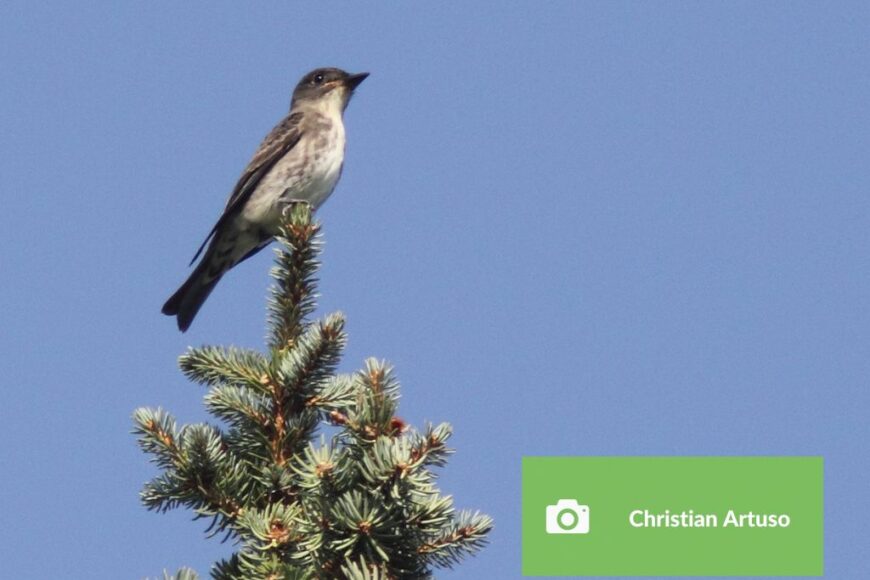Dawson Trail Dispatch, written by Norm Gregoire, October 2023
Page 15 https://issuu.com/dispatch222/docs/dawson_trail_dispatch_october_2023
Over time, many avid birdwatchers develop favorite species to track down and spend time with. Although you may think it is easiest to be attracted to some of the many colourful species we have in the tall-grass prairie, I find that I enjoy a bird that has character. You may ask, “How can one bird have more character than the next?” I think if you spend some time watching members of the flycatcher family, you will understand what I mean. They tirelessly work, catching insects one after the next, often using a rural backyard as hunting grounds. They are like sentinels on their perch until they make that quick movement towards their prey. They may not be flashy, but they are entertaining to watch! If you are a flycatcher fanatic like I am, over the years you may have noticed a decline in sightings. Indeed, some species population numbers have been declining, including the olive-sided flycatcher, which is now designated a species at risk.
The olive-sided flycatcher is a medium-sized bird, dark grey in colour with sooty flanks and a contrasting white strip down the breast and on the throat. The bill is large, and the plumage on the rear of the head is peaked. In Manitoba, our flycatchers have the same general look to them, so using other variables can help to differentiate one species from the other. One thing to consider is where the flycatcher is perching. If it is on a high, conspicuous perch, like the top of a tree in an open area, that could be a sign that it is olive-sided. Another way to distinguish this species from other flycatchers is by their distinct call, which has been said to sound like “quick, three beers.”
Olive-sided flycatchers tend to breed in patchy networks of conifer woods in openings or on edges in meadows, muskegs, and waterways, as well as those created by partial logging and natural wildfires. Fires also leave behind dead standing trees, which are ideal for olive-sided flycatchers to use not only as hunting platforms but also as singing perches. This vocalization is crucial, especially for the males, as it helps identify their home territory to competing flycatchers. Each home territory can be over one hundred acres in size! The olive-sided flycatcher constructs nests on conifer trees, sometimes using a dead or burned tree. Nests are usually built towards the end of a limb and constructed of a mixture of twigs, grasses, and lichens. When the eggs hatch (usually three to four), the parents will stay with the young until migration. The olive-sided has the longest migration of any Canadian flycatcher and can overwinter as far south as Brazil.
What I love most about flycatchers is watching them hunt insects. Sadly, the drop in insect numbers is arguably the biggest reason for declining flycatcher populations. It is estimated by the North America Breeding Bird Survey that in the last five-plus decades we have seen a decline of over eighty percent in the olive-sided flycatcher population. Habitat loss on wintering and breeding grounds also plays a role in the declining population.
It is important to take note of these changes in the natural world around us and ask ourselves if we want to aid recovery efforts or let these species disappear. If you are interested in learning how you can help species at risk in our community, please contact me at info@sharedlegacymb.ca.

